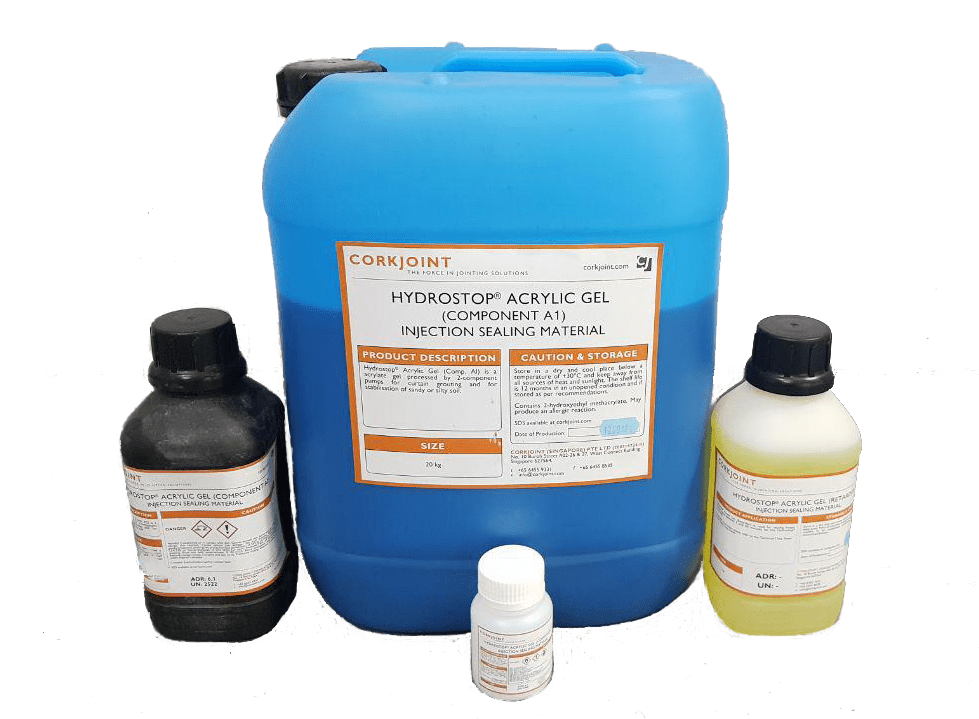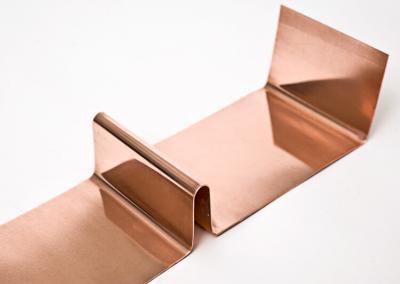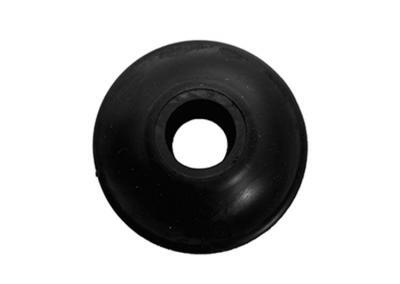HYDROSTOP® ACRYLIC GEL Injection Sealing Material
Click on Image to view full screen
PRODUCT BROCHURE
Press X Arrow Toggle for Full Screen View
Product Description
Hydrostop® Acrylic Gel Injection Sealing Material is an elastic hydrophilic two (2) component (A + B) acrylic gel designed to be used with the Hydrostop® CJ1 Injection Hose System or with injection packers for sealing and stopping water egress through construction joints and cracks in concrete.
Hydrostop® Acrylic Gel Injection Sealing Material starts out as a similar viscosity to water, which enables it to be injected and penetrate into the construction joint and into fine cracks in concrete. The curing process of the gel is gradual and is linear in performance, which allows time for processing and flushing of the injection hose for possible future re-injection capabilities.
Hydrostop® Acrylic Gel Injection Sealing Material has strong adhesion to concrete and due to its high elongation and hydrophilic ability, the product is able to withstand shrinkage, expansion, and dynamic movements of the injected construction joint and/ or crack.
Hydrostop® Acrylic Gel Injection Sealing Material has the ability to absorb water up to 100% and has an ultimate elongation of 500%. The reaction time for curing of the gel can be adjusted to suit the specific requirement of the project and the environment.
This product is part of our Waterstop product range.
Areas of Application
- All areas where construction joints are present and require sealing against water or require a particular joint sealing process.
- Water excluding and water retaining structures.
Basements and below ground structures. - Tunnels and underground vaults.
- Water and sewerage treatment plants.
- Ground and elevated reservoirs and dams.
- Suspended slabs and roof slabs.
- Water tanks and swimming pools.
Note : The product’s design and performance, its intended use, installation and final confirmation and approval for use, must be provided by the project’s Design Engineer and Project Manager.
Advantages
- High performance ability to egress and penetrate deeply into construction joints or cracks due to the products initial low viscosity when processed via an injection hose system or injection packer.
- Processing times are fast and simple due to the gradual linear performance of the gel when curing.
- A very high sealing effect with long term durability and integrity.
- High elasticity and adhesion to construction materials such as concrete, masonry and steel.
- Can be processed as one (1) or two (2) components.
- Reaction time for curing can be adjusted to suit (consult CORKJOINT®) but there are limitations.
Contains no toxic solvents, is non-flammable and is suitable for use in potable water applications. - Good general chemical resistance characteristics to diesel, mineral oils, alkaline and concrete aggressive liquids.
Substance Properties of Components
Hydrostop® Acrylic Gel
Component A1 – an aqueous methacrylate polymer
Component A2 – an aqueous acrylic polymer catalyst
Component B1 – clean water (supplied by end-user)
Component B2 – a water soluble initiator powder
Retarder – an aqueous solution
Upon mixing of the above components, the initiator component starts the polymerization reaction of the methacrylate, forming an elastic gel which is hydrophilic in nature and enables absorption and desorption of water. After curing, the gel is highly chemical resistant against a number of organic and inorganic substances.
Technical Features........
Note: * The declared range of temperature complies with our recommendations. Generally, the product reacts even at very low temperatures (from experience down to approx. -15°C) or distinct higher values than +40°C. Admittedly, problems might occur, which are not directly related to the properties of the product. At sharp frost the air line of the pump might freeze or even present ice inside the structural element to be sealed, can cause difficulties. At temperatures above-average too short reaction times can arise, which prevent an entire and successful filling of the injection area. Also might happen activated A- component at very high temperatures can start curing even without addition of the B- component, which results in a blockage of the injection pump.
** The indicated curing time is achieved through the stated quantities of B2 component and Hydrostop® Acrylic Gel Retarder. Curing time can be adjusted by changing these components. Refer to CORKJOINT® for further information.
Packaging
The Hydrostop® Acrylic Gel system consists of four (4) components supplied as a kit (A1, A2, B2 & Retarder) but five (5) components are required for mixing, where B1 (Water) is supplied by the end user.
| A1 | Hydrostop®Acrylic Gel Polymer (acrylate) 20kg | plastic drum |
| A2 | Hydrostop® Acrylic Gel Catalyst (acrylate) | 1 kg – plastic bottle |
| A3 | Clean water (supplied by end user) | 20 kg |
| A4 | Hydrostop® Acrylic Gel Initiator (powder) | 40 g – plastic bottle |
| Retarder | Hydrostop® Retarder (aqueous solution) | 1 kg – plastic bottle |
Mixing and Processing
Two solutions of A and B are to be prepared for the application for injection, as follows:
Solution 1 (A) : Component A1 with Component A2.
Solution 2 (B) : Water supplied by the end user with Component B2 and Retarder.
Note : The shelf life of Solution 1 (A) and Solution 2 (B), once mixed as above, is approximately 24 hours.
Note : When Solution 1 (A) and Solution 2 (B) are combined for injection, they become 42.40 kg of processible material.
Only use plastic or wooden paddles for mixing of the two solutions, do not use metal. Mix the A1 and A2 components together for approximately 10 minutes and mix the B1, B2 and Retarder components together for approximately 10 minutes. The temperature of B1 water should be at about 25°C. Store all of the Components in a cool environment and away from direct sunlight at all times and prior to mixing.
To form an acrylic gel, Solution 1 (the components of A1 & A2) and Solution 2 (B1,B2 & Retarder) must be mixed at a ratio of 1:1 by volume. The reaction/ curing time at 25°C will be approximately 15 minutes and can be adjusted if required. Refer to CORKJOINT® for further information if curing times are to be adjusted.
The reaction time decreases if the temperature is higher and increases when the temperature is lower. Please consider that site conditions have a major influence on the reaction time of Hydrostop® Acrylic Gel. We strongly advise to diagnose the reaction time on site depending on the weather conditions before injecting Hydrostop® Acrylic Gel. A site ‘reaction time mixing test’ should be performed on the Hydrostop® Acrylic Gel prior to the injection process to indicate the actual reaction time of the kit, based on the current site temperature conditions.
Note : Hot & cold temperatures and hot & cold substrates can affect the gelling time of Hydrostop® Acrylic Gel.
Hydrostop® Acrylic Gel is recommended to be injected into the injection hose with a two-component (2K) or three-component (3K) manual, electric or pneumatic pump. The parts of the machine that are in contact with the gel must be stainless steel.
For the injection hose to be re-injectable, flush out fully the Hydrostop® Acrylic Gel from the injection hose under low pressure (1 bar) with water, prior to the reaction (curing) time of Hydrostop® Acrylic Gel.
Hydrostop® Acrylic Gel can be used in certain injection hose systems to give re- njection capabilities, consult CORKJOINT® for further information.
On-site training for mixing and processing is available from CORKJOINT® upon request.
Injection Guidelines for Injection Hose System
The following injection procedure is based upon the use of Hydrostop Acrylic Gel (HAG) injection material. For an injection process using P.U, E.P or UFC, contact CORKJOINT® for further information.
- Prior to undertaking an injection process, check that the Hydrostop® CJ1 is free and clear, by injecting with water or air. Locations of the joint that have exposed voids or areas that have moisture or water slowly leaking from them, use a quick dry cement to help plug the area so to help prevent the egress of injection material out of the joint during the injection process.
- Hydrostop® CJ1 is injected via the Injection Point. The HAG injection material is injected into the
injection hose until 100% of the injection material is flowing out from the outlet pipe of the opposite
Injection Point. Once the HAG injection material is flowing freely (no air pockets or water from flushing is present), stop injecting and close the outlet pipe off with the use of an injection nipple. The injection hose is now ready for the 1st injection process to take place. - The injection process is undertaken with a suitable injection pump for use with HAG injection material A 2 component or 3 component manual or electric compressed air injection pump with an adjustable pressure gauge manometer, provide the best optimal injection process. Hydrostop® CJ1 is injected with an injection pressure of approximately 2.0 Bar up to 3.0 Bar for Standard injection lengths. Low pressure is best as it allows for the HAG injection material to slowly and easily penetrate into the joint, cracks and voids of the concrete.
- The injection process is monitored by visually inspecting the joint location where the injection hose is positioned and by means of the pressure gauge on the injection pump. If a manual hand-pump is being used, then monitoring is also done manually by feel and vision. Note: Not always are you able to visually see injection material egressing out of the joint as the injection material may be coming out from the opposite side of the joint that can’t be seen, so monitoring of the injection pump by the pressure gauge, by feel and listening to the pump is important.
- The injection process is continued until the joint is full with injection material. Depending upon the type of injection pump being used, will depend upon how you are able to ascertain if the joint is filled with injection material or if another injection process is required. If the joint stops leaking water after a few minutes of injecting, then the injection process is successful and a second injection process may not be required. A second injection process is recommended even if the joint stops leaking so to be sure that the joint is completely filled with injection material.
- Hydrostop® CJ1 needs to be flushed out fully with water after the injection process has taken place and prior to the HAG injection material curing, otherwise the injection hose will be blocked and no future reinjection can take place.
Note: Typical Installations and Injection Method Processes are available upon request. Fully trained specialist contractors are available to perform the installation and injection processes for Hydrostop® CJ1. Refer to CORKJOINT® for further information.
Limitations
If the construction joint, crack, or void in the concrete are subject to a high flow of water pressure, then Hydrostop® Acrylic Gel may not be suitable for use as the reaction time may be too slow to seal and the material may be initially washed from the joint. Consult CORKJOINT® for a site substrate evaluation, prior to the undertaking of the injection process.
Cleaning
The product if not cured can be removed with cleaner or water. If cured, then depending upon the substrate, will depend upon the tool required to be used to remove the cured gel, as it adheres very well to most materials.
Storage Conditions & Shelf Life
Store in a dry and cool place below a temperature of +30°C and keep away from all sources of heat and sunlight. The shelf life is 12 months in an unopened condition and if stored as per recommendations.
Written Specification
Where shown in the drawings, the injection material for use shall be Hydrostop® Acrylic Gel as supplied by CORKJOINT®. The application/installation of the product must be in accordance with the manufacturer’s recommendations.
Health and Safety Information
As with all construction chemical products, caution should be exercised. Protective clothing such as gloves and goggles should be worn. Treat and wash any splashes to the skin or eyes with fresh water immediately. Should any of the products be accidentally swallowed, do not induce vomiting but call/seek for medical assistance immediately.
In confined spaces or in still air conditions, the use of a ventilation fan or suitable respirator should be used, and the advice and approval of the Site Safety Supervisor is essential. For further information or advice on health and safety precautions, safe handling, storage and correct disposal of products, please refer to the most recent product Safety Data Sheet (SDS), which is available upon request.
Disclaimer
The information and the recommendations relating to the application and end use of this product are given in good faith and are based on the information provided by the manufacturer of the product and/or the Company’s current knowledge and experience in connection with the product when properly stored, handled and applied under normal conditions and no liability of final function at the job site is assumed. In practice, the differences in materials, substrates and actual site conditions are such that no warranty in respect of merchantability of, or fitness for, particular purpose, nor any liability arising out of any legal relationship whatsoever, can be inferred either from this information, or from any written and/or oral recommendations, or from any other advice offered by the Company. The Company also has no express or implied knowledge of any particular purpose for which the product is required and any such information given will not be taken into account in the supply of this product. No responsibility or liability by the Company will be accepted for misuse, misreading or derivation from recommended guidelines in respect of this product and the user shall determine the suitability of the product for his intended use and assume all risks and liability in connection therewith. The information contained in our brochure may change at any time without notice. Any use of this product, Hydrostop® Acrylic Gel, in any application should be approved as suitable for use/application by the Design Engineer and Project Manager.




















